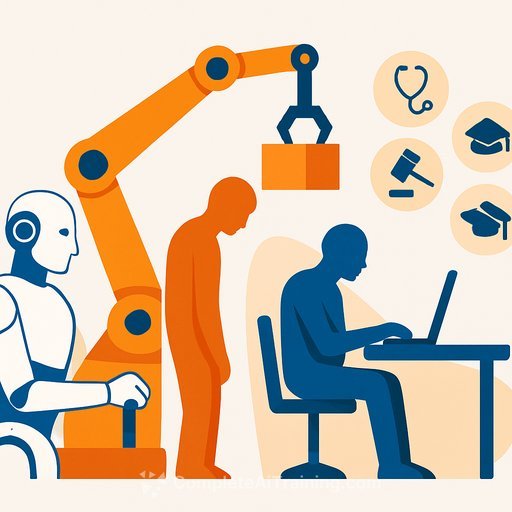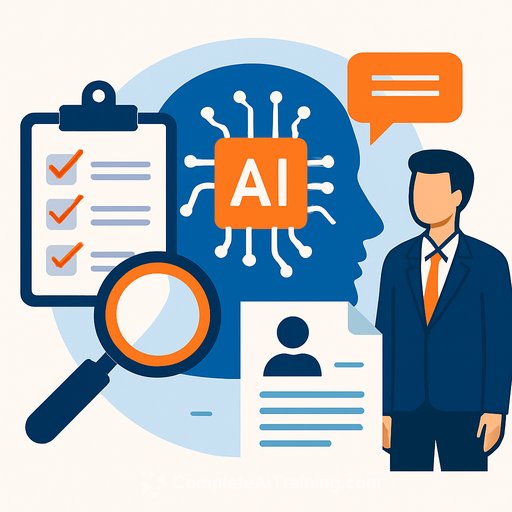Digitalization and AI: Jobs on the brink? Here's what HR needs to do now
Technology is changing work faster than most orgs can respond. Entire roles are at risk, not just tasks. The question isn't "Will jobs go away?" It's "How fast can we redesign them?"
If you're in HR, this is your moment to be practical, visible, and specific. Your choices in the next 90 days will set the tone for the next 3 years.
What's actually at risk
Roles built on repeatable, rules-based tasks are exposed. Think data entry, basic accounting, customer support scripts, standard research, and first-draft content. Parts of legal, finance, operations, and marketing are affected too.
But the story isn't only loss. Work is being rearranged. Tasks move from "done by a person" to "done with a system," and the same role gets reweighted toward judgment, relationship, and oversight.
The upside: job redesign and augmentation
For most teams, the near-term win is augmentation. Let software handle the repetitive work while people focus on analysis, quality, and decisions. Job descriptions shift. Performance metrics shift. Training shifts.
Your edge comes from speed: identify which tasks can be automated, reassign work, and upskill the people who stay closest to customers and outcomes.
A 90-day action plan for HR
- Map the work, not just the roles: Break priority roles into tasks. Tag each as automate, assist, or human-only.
- Prioritize high-volume tasks: Start where hours are wasted and errors are common.
- Run three low-risk pilots: Examples: candidate screening summaries, meeting notes to action items, first-draft FAQs for support.
- Redesign job descriptions: Add accountability for review, escalation, and tool oversight. Remove obsolete duties.
- Create skill pathways: Pair core skills (analysis, writing, customer judgment) with tool skills (prompting, QA, data hygiene).
- Set guardrails: Draft policy on data use, confidentiality, bias checks, and approval flows.
- Communicate clearly: Explain what's changing, why, and how people can stay valuable.
Reskilling that sticks (not shelfware)
- Train on tasks, not theory: Build microplaybooks: "How we create a job post," "How we QA outputs," "How we escalate."
- Use skill adjacencies: Move people from similar work (e.g., support to QA, payroll to data checks) with short, focused practice.
- Coach reviewers: The hardest skill now is judgment: knowing when an output is wrong, risky, or good enough.
If you need structured programs by role, see these curated paths: AI courses by job.
Guardrails: fairness, privacy, compliance
- Data policy: No sensitive data in public tools. Use approved systems. Log prompts and outputs for audits.
- Bias checks: Review hiring, promotion, and pay decisions for disparate effects. Keep a human in final decisions.
- Model limits: Require source links, disclaimers for draft content, and a second pair of eyes for anything external.
- Vendor diligence: Security, data handling, retention, and indemnity-document it.
For a reference framework, many teams use the NIST AI Risk Management Framework.
Metrics that matter
- Hours saved per role and where those hours go (customers, quality, backlog).
- Error rate and rework before/after.
- Time-to-fill, quality-of-hire, and first-90-day performance for talent teams using new tools.
- Training adoption and on-the-job application within 30 days.
- Internal mobility rate for at-risk roles.
Quick wins HR can deploy this week
- Job post generator + reviewer: Draft posts from a skills template, then human-edit for clarity and bias.
- Candidate screen summaries: Convert resumes and notes into structured scorecards tied to must-have competencies.
- Interview aid: Create role-specific question banks and rubrics to reduce noise and drift.
- Onboarding checklists: Auto-generate day 1-30 plans by role and manager.
- Policy drafts: First-pass drafts for handbook updates, with legal review before release.
What to tell employees
Be honest: some tasks will disappear. Your goal is to move people to higher-value work, faster. Share the plan, the timeline, and the support you'll provide.
Give them a path: the skills that matter, where to learn, and how success will be measured. Then back it with coaching and real opportunities.
Where this is headed
Jobs aren't vanishing overnight, but the task mix is shifting. Teams that adapt job design, skills, and policy will keep their edge and protect people.
If you want a broader view of demand and displacement, the Future of Jobs Report offers useful trendlines. Your job is to turn that into action on the ground-one role, one task, one pilot at a time.
Your membership also unlocks:






